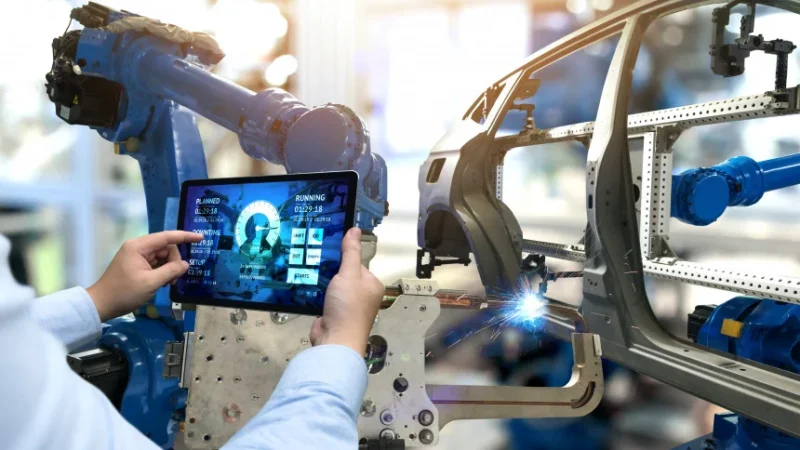Level Up Your Business with an Educational Gamification Platform: Here’s How!

Are you ready to take your business to the next level? Imagine a world where learning is not only effective but also fun and engaging. Well, say hello to educational gamification! By incorporating game elements into your training and development programs, you can revolutionise the way your employees learn and grow. In this blog post, we will explore how an educational gamification platform can transform your business by boosting productivity, fostering collaboration, and igniting a passion for continuous improvement. Get ready to level up – let’s dive in!
Introduction to Gamification and Its Importance in Business
Gamification is the process of applying game design elements and principles in non-game contexts. It involves using game mechanics, such as points, levels, rewards, and competition, to motivate and engage users in various activities. The concept of gamification has gained a lot of traction in recent years, with businesses across different industries adopting it to enhance their processes and achieve business objectives.
The use of gamification in business is not just limited to creating fun experiences for customers; it also has significant benefits for companies. In this section, we will delve into the importance of gamification in business and how it can help your organisation reach new heights.
1. Enhances Employee Engagement
One of the primary reasons why businesses are turning to gamification is its ability to boost employee engagement. By incorporating game elements into tasks or training programs, employees are more likely to be motivated and actively participate. This can lead to increased productivity, improved job satisfaction, and reduced turnover rates.
2. Encourages Learning
Gamification has proven to be an effective tool for improving learning outcomes among employees. By making learning more interactive and enjoyable through gaming elements like quizzes, leaderboards, and challenges, employees are more likely to retain information better. This makes it an ideal choice for organisations looking to upskill their workforce quickly.
3. Drives Customer Loyalty
In today’s highly competitive market landscape, retaining customers is crucial for any business’s success. Gamifying customer experiences through loyalty programs or reward systems can increase brand loyalty by creating a sense of achievement and exclusivity among customers.
4. Improves Data Collection
Collecting accurate data is essential for making informed business decisions. With traditional methods like surveys often yielding low response rates due to boredom or lack of incentives, gamification offers a solution by providing engaging ways for customers or employees to give feedback or input data.
5. Increases Sales Performance
Gamification can also be used to incentivize sales teams and drive better performance. By incorporating game elements into the sales process, such as leaderboards, bonuses, and rewards for meeting targets, employees are more likely to be motivated to sell more effectively.
Gamification is a powerful tool that has numerous benefits for businesses. From enhancing employee engagement and learning outcomes to driving customer loyalty and improving data collection, it has become an essential strategy for companies looking to stay ahead of the competition. In the next section, we will discuss how you can leverage an educational gamification platform to level up your business.
Understanding Educational Gamification Platforms
Educational gamification platforms are a powerful tool that combines the elements of gaming and education to create an engaging learning experience for students. These platforms use game-like mechanics, such as rewards, challenges, and competition, to motivate learners and enhance their skills and knowledge in a particular subject area.
One of the key benefits of using educational gamification platforms is that they make learning fun and interactive. Unlike traditional methods of teaching, where students often feel bored or disinterested, gamification adds an element of excitement to the learning process. By incorporating game-like features such as levels, points, badges, and leaderboards, these platforms keep students engaged and motivated to progress further.
Moreover, educational gamification platforms provide instant feedback to students on their progress. This allows learners to track their performance in real-time and identify areas where they need improvement. This immediate feedback not only helps students stay on track but also encourages them to strive for better results.
Additionally, these platforms offer personalised learning experiences that cater to each student’s individual needs. With the help of advanced algorithms and data analytics tools, educational gamification platforms can identify a student’s strengths and weaknesses in a particular subject area. Based on this information, they can provide customised lesson plans that address those specific areas where a student needs more practice or support.
Another significant advantage of using educational gamification platforms is that they promote collaboration among students. Many of these platforms offer multiplayer games or challenges where students can work together towards a common goal while still competing with each other for rewards or points. This fosters teamwork skills among students while also promoting healthy competition.
In addition to benefiting individual learners’ growth and development, educational gamification platforms are also beneficial for businesses. These platforms can be used by organisations for employee training programs or onboarding processes. By providing an interactive learning experience through gamified training modules, businesses can ensure employees are engaged in their learning process while developing new skills required for their job roles.
Educational gamification platforms offer a wide range of benefits for both students and businesses. They make learning more fun and interactive, provide real-time feedback and personalised learning experiences, promote collaboration and teamwork, and can be used for employee training. By incorporating these platforms into your business or academic setting, you can take your learning experience to the next level and achieve better results.
Benefits of Implementing a Gamification Platform in Your Business
Gamification, the use of game design and mechanics in non-game contexts, has become increasingly popular in various industries. From education to employee training, businesses are recognizing the benefits of implementing a gamification platform. In this section, we will discuss the specific advantages that a gamification platform can bring to your business.
1. Increases Employee Motivation and Engagement
One of the key benefits of using a gamification platform in your business is its ability to increase employee motivation and engagement. By incorporating elements such as points, badges, and leaderboards into tasks or training programs, employees are more likely to feel motivated to perform well and achieve their goals. This sense of competition and achievement can also foster a sense of engagement among employees, making them more invested in their work.
2. Improves Learning and Retention
Educational gamification platforms have proven to be an effective tool for learning and retention. The use of interactive games and challenges can make learning more engaging and enjoyable for employees. This can result in better understanding and retention of important information or skills that are necessary for their job roles.
3. Encourages Collaboration
Many gamification platforms offer collaborative features that allow employees to work together towards a common goal or compete against each other as teams. This encourages teamwork, communication, and collaboration among colleagues who may not typically interact with each other on a regular basis.
4. Provides Real-Time Feedback
Another advantage of using a gamification platform is its ability to provide real-time feedback to users. As employees complete tasks or participate in challenges, they receive immediate feedback on their performance through points or progress indicators. This allows them to track their progress and identify areas where they need improvement.
5. Fosters Healthy Competition
Competition is known to drive individuals towards success by pushing them out of their comfort zones and encouraging them to do better than others. A properly implemented gamification platform can create healthy competition within your business by setting attainable goals and challenges for employees to strive towards. This can result in increased productivity and better performance among team members.
6. Boosts Overall Company Performance
Ultimately, the implementation of a gamification platform can contribute to the overall success and growth of your business. By increasing employee motivation, engagement, learning, collaboration, and healthy competition, businesses can see an improvement in their bottom line through increased productivity and performance.
The benefits of implementing a gamification platform in your business are numerous. From improving employee motivation and engagement to enhancing learning and retention, this innovative tool can bring significant advantages to your company’s operations. So why not consider incorporating gamification into your business strategy today?
Key Features to Consider When Building an Educational Gamification Platform
Gamification has become a popular tool in the education industry, with more and more schools and businesses incorporating it into their learning strategies. However, building an effective educational gamification platform requires careful consideration of key features that will make it engaging, interactive, and meaningful for the users. In this section, we will discuss some important aspects to keep in mind when creating your own educational gamification platform.
1. Clear Learning Objectives: The first step in designing any effective educational tool is to determine the desired learning outcomes. This is no different when it comes to gamification platforms. Clearly defining your learning objectives will help guide the development process and ensure that all game elements are aligned with the intended goals.
2. Engaging Gameplay: The success of any game lies in its ability to engage and motivate players to continue playing. The same principle applies to educational games – they should be designed in a way that captures the attention of learners and makes them want to keep playing. This can be achieved through interesting storylines, challenging tasks, rewards, and competition.
3. Personalization: Every learner has unique needs and preferences when it comes to learning. A good gamification platform should provide options for personalization so that learners can tailor their experience according to their individual learning styles and pace.
4. Progress Tracking: One of the biggest advantages of using a gamified approach is the ability to track progress accurately. This feature not only allows learners to see how far they have come but also provides valuable data for instructors or managers on areas where improvement may be needed.
5. Feedback System: Constructive feedback is crucial for growth and improvement in any learning process. A well-designed feedback system within a gamification platform can provide learners with immediate responses on their performance while also motivating them to keep improving.
6. Social Interaction: Humans are social creatures by nature, which is why incorporating social elements into a gamification platform can make the learning experience more enjoyable and effective. Features such as leaderboards, team challenges, or peer-to-peer competition can foster collaboration and healthy competition among learners.
7. Accessibility: With the rise of remote learning and online education, it is essential to ensure that your educational gamification platform is accessible on various devices and platforms. This will allow learners to access the content anytime, anywhere, making it easier for them to stay engaged and motivated.
Creating an educational gamification platform requires careful consideration of key features that will make it engaging, personalised, and effective in achieving learning objectives. By keeping these crucial elements in mind during the development process, you can create a powerful tool that will level up your business’s training or educational programs.
Steps to Building an Effective Educational Gamification Platform for Your Business
Building an effective educational gamification platform for your business can seem like a daunting task, but with the right approach and strategy, it can be a rewarding and successful venture. In this section, we will outline the key steps to creating a powerful and engaging gamification platform for your business.
Step 1: Define Your Learning Objectives
The first step in building an educational gamification platform is to clearly define your learning objectives. What are the specific skills or knowledge you want your employees or customers to acquire? Are there any specific areas of improvement you want to target? Having a clear understanding of your goals will help guide the design and development process.
Step 2: Identify Your Target Audience
Once you have defined your learning objectives, it is important to identify your target audience. This includes factors such as their age range, education level, job roles, and interests. Understanding who will be using the platform will help you tailor the content and game mechanics to their needs and preferences.
Step 3: Choose the Right Game Mechanics
Game mechanics are essential elements that make a game enjoyable and engaging. They include points, levels, challenges, rewards systems, leaderboards, etc. When selecting game mechanics for your platform, consider how they align with your learning objectives and cater to your target audience’s interests.
Step 4: Design Engaging Content
The success of an educational gamification platform heavily relies on its content. The material should be relevant, interactive, and visually appealing. You can incorporate different types of content such as videos, quizzes, simulations, mini-games into each level or challenge to keep users engaged.
Step 5: Integrate Feedback Mechanisms
Feedback mechanisms provide valuable insights into users’ engagement levels and progress through the platform. It also allows users to track their performance and identify areas where they need improvement. Consider incorporating feedback mechanisms such as progress bars or badges throughout the platform.
Step 6: Test and Refine
Before launching your platform, it is crucial to test it thoroughly. This includes testing for functionality, user-friendliness, and how well it aligns with your learning objectives. Collect feedback from a group of beta users and use their insights to refine and improve the platform further.
Step 7: Launch and Promote Your Platform
Once you have tested and refined your platform, it’s time for the launch! Make sure to promote your platform through various channels such as social media, email marketing, or internal company communications. Encourage employees or customers to participate by offering incentives or rewards for active engagement.
Building an effective educational gamification platform requires careful planning, understanding of the target audience, engaging content, and thorough testing before launch. By following these steps, you can create a powerful tool that not only enhances learning but also boosts employee performance and customer satisfaction in your business.
Conclusion
In today’s digital age, businesses need to constantly adapt and innovate in order to stay competitive. An educational gamification platform can be a powerful tool for levelling up your business by engaging employees, improving their skills and knowledge, and fostering a culture of continuous learning. By implementing these tips and utilising the right platform, you can take your company to new heights and see tangible results in employee engagement, productivity, and overall success. So why wait? Start exploring the world of gamified learning today!






